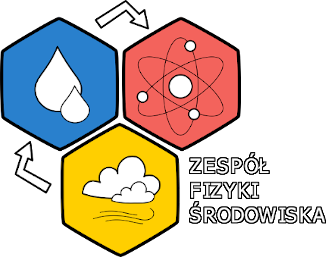MicroRNAs expression of human peripheral blood monocytes following in vitro exposure to ambient fine particulate matter (PM2,5)- a potential link between air pollution and atherosclerosis
Title:
MicroRNAs expression of human peripheral blood monocytes following in vitro exposure to ambient fine particulate matter (PM2,5)- a potential link between air pollution and atherosclerosis.
Project leader:
prof. dr hab. Ewa Konduracka
Project leader at AGH:
dr hab. inz. Mirosław Zimnoch, prof AGH
Scientific area:
NZ - Life sciences
Project length (months):
36
Number of researchers:
17
Keywords:
air pollution, microRNA expression, atherosclerosis
Research hypotheses.
We hypothesize that the contact of peripheral blood monocytes (immune system cells with a relatively well-defined role in the development of atherosclerosis) with PM2.5 results in changes to microRNAs (miRNA) that may affect the pathways associated with endothelial dysfunction and development of atherosclerosis. (study in vitro) Changes in the miRNA expression may affect endothelial function and may help elucidate the mechanisms of systemic effects of PM on the cardiovascular system. We also believe that in humans chronic exposition on PM is associated with changes in miRNA expression depending on the seasonal concentrations and chemical composition of PM2.5.(study in vivo)
The aims of the study:
1.To determine whether in vitro acute exposure of peripheral blood monocytes to different concentrations of PM2.5 (with known chemical composition) is associated with changes in the miRNA profile.
2.To determine which miRNA may affect the development of endothelial dysfunction.
3. Evaluate the miRNA expression in chronic exposed inhabitants of the same Kraków district depending on the seasonal concentrations of PM2.5.
Methods.
1.Seasonal (winter-summer) sampling of PM2.5
2. Analysis of chemical composition of PM2.5
3. Source apportionment analysis of the collected samples of PM2.5.
4. Extraction of PM2.5 samples for biological analysis
5. Isolation of peripheral venous blood monocytes-single venous blood collection from blood donors.
6.Experimental (in vitro) exposure of human monocytes to a suspension of PM2.5 (3 different concentrations), estimation of changes in miRNa expression and inflammatory cytokines
7. Clinical (in vivo) evaluation of seasonal exposure to atmospheric PM2.5-estimation of changes in miRNa expression in 67 hypertensive coronary patients and 67 hypertensive non-coronary subjects. All study subjects are inhabitants of the same Kraków district for least 20 years or more.
8.Statistical methods -the majority of statistical analyses will be performed using the STATISTICA 7.0 PL software.
Expected impact of the research project on the development of science, civilization and society
Although a number of epidemiological studies have reported an association between the exposure to fine PM (PM2.5) and the incidence of atherosclerosis, the exact mechanisms leading to atherosclerosis are still unknown. In our research project, we will attempt to establish the role of peripheral blood monocytes (in vitro study) exposed to different concentration of PM2.5 (with known chemical content) in the molecular mechanisms of atherosclerosis what is very important from the medical point of view. In the second part of the study, we will assess whether the seasonal exposure (winter–summer) of Kraków citizens to different levels of PM result in changes in the miRNA expression and whether there are any differences in the miRNA expression between winter and summer. This part of the study is designed to assess whether the change in the miRNA expression in vitro will be similar to the change observed in humans. The potential correlation between in vivo and in vitro results will have clinical significance and will allow to assess the effect of PM2.5 on the body. To our knowledge, there have been no studies that would simultaneously assess the mechanisms of atherosclerosis in vivo and in vitro in the context of air pollution. The next important aspect of our research project is PM2.5 sampling and detailed seasonal analysis of its elemental composition, which will be used in our study. The composition of PM2.5 has a significant effect on health and is strictly connected with source of emission. In Poland, there are few research groups that study the composition of PM. We will also attempt to establish the sources of PM2.5 pollution, which may be important for
air pollution reduction measures undertaken in Kraków and other regions of Poland.



